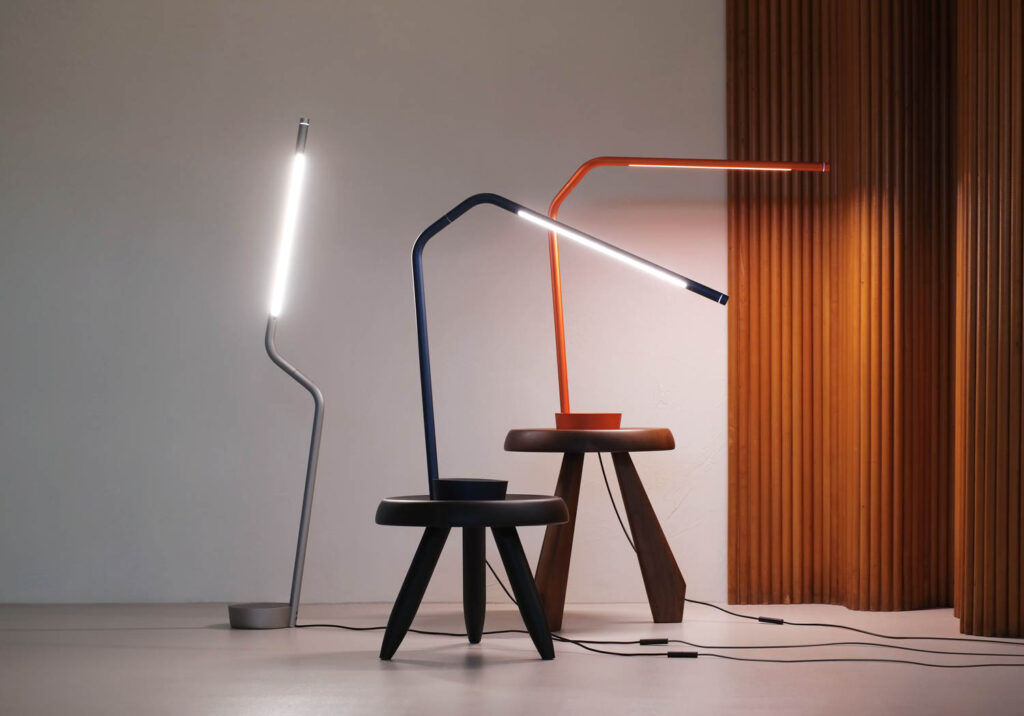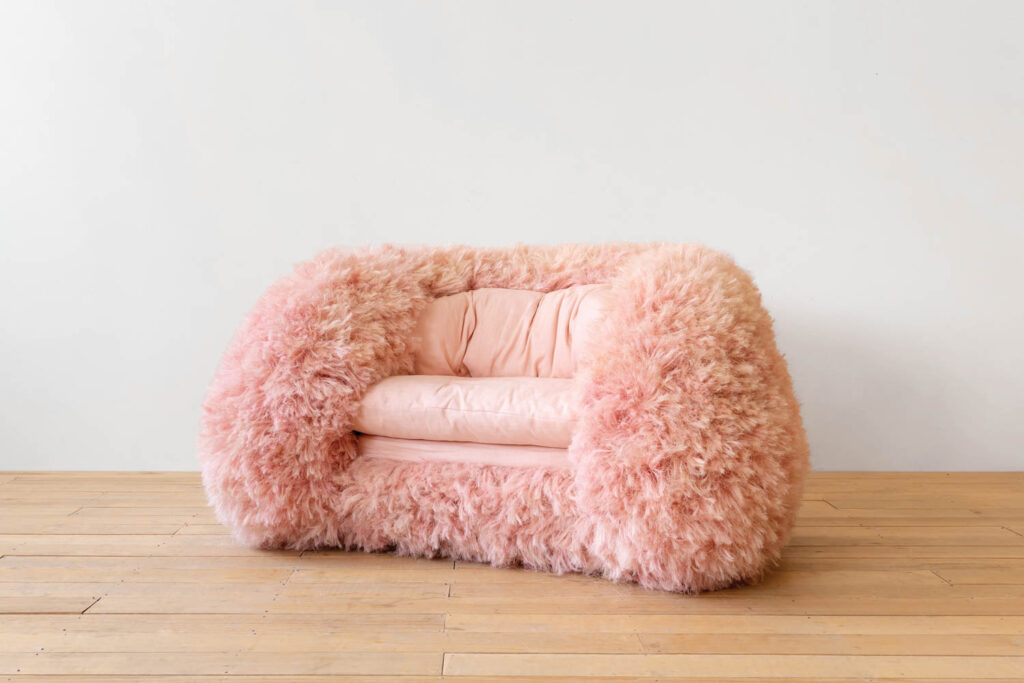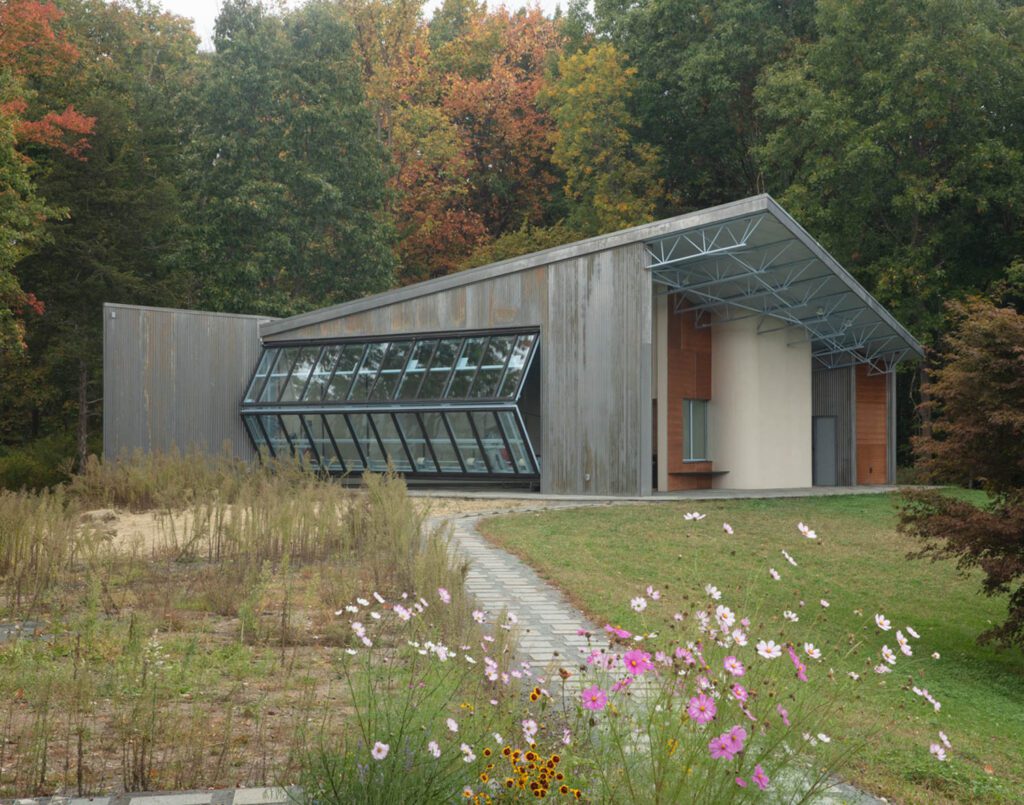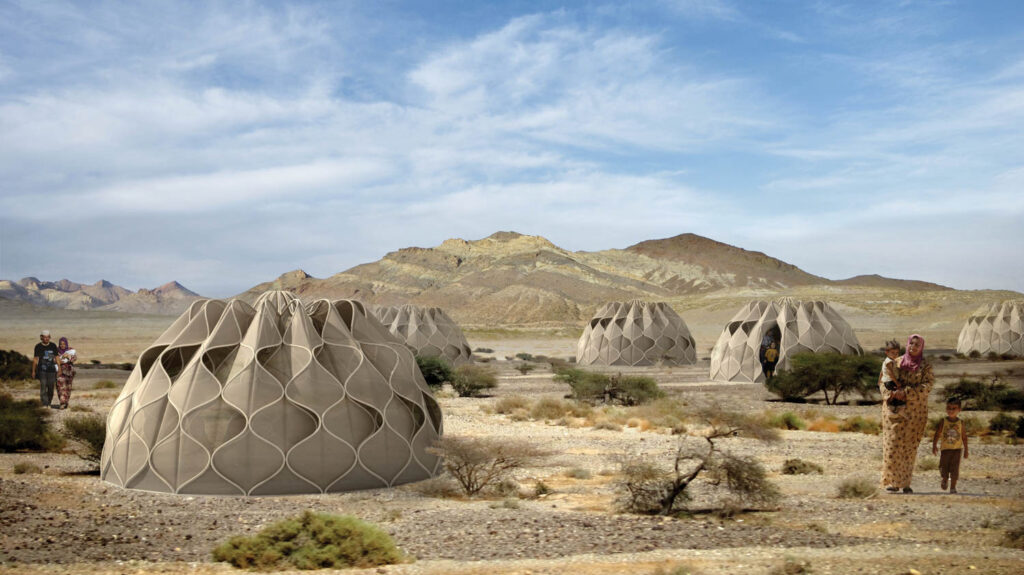
10 Questions With… John Sorensen-Jolink
After 10 years honing his skills as a professional dancer for some of the industry’s leading directors and choreographers—such as Robert Wilson and Twyla Tharp—John Sorensen-Jolink sought new ways to express his inherent understanding of the human body. Training as a woodworker, the New York-based multi-hyphenate realized furniture and lighting design offered the perfect next step to explore the principles of flow, balance, and shape he cultivated as a performer. Though one medium is more ephemeral in the immediate, both encompass the notion of process; refining skills and concept development through physical practices that ultimately manifest in a desired result, which led Sorensen-Jolink to establish his design studio Coil + Drift in 2016.
Carefully conceived chairs like the emphatically gestural Soren Chair and the corporeal Ren Table reflect a similar ambition to distill equilibrium, calmness, and effortlessness as that achieved in carefully calibrated movement. It all comes down to clear, pared-back intention. The dancer-turned-designer’s unparalleled approach is rooted in nature and order as well as exploration and intuition. It’s a practice that garnered him the ICFF Editors’ Award for Best New Designer and numerous other accolades.
Seeking out more space for introspective and reflection like so many of his contemporaries, Sorensen-Jolink began to transition from the hustle and bustle of urban life to the bucolic setting of rural upstate New York just before the Covid pandemic. The prolonged lockdown of early 2020 allowed him time to start imagining a life and career in a new context.
Recently, he opened a hybrid workshop/showroom in a converted Western Catskills garage. To inaugurate the new Jeffersonville, New York, locale this September, he launched the Loon lumaire collection. Comprising seven distinct pendant lamp concepts and one sconce, the collection harnesses rare materials like manganese bronze and gently-aged brass in geometric interpretation of natural forms, eggs and leaves among them. The simplified yet patented designs represent a transition in his aesthetic, one that is informed by the grittiness of the city and the serenity of the countryside in equal measure.


John Sorensen-Jolink Talks Design, Dance, and More
INTERIOR DESIGN: What prompted your move upstate and the re-establishment of your studio in a former car repair shop?
John Sorensen-Jolink: After 20 years in New York City, I hungered for a deeper connection to nature and was attracted to the idea of being part of a smaller community. I thought I would buy a weekend home in the Western Catskills, after renting a cabin there for years, but during the Covid lockdown I spent all my time in Sullivan County and realized that this community had so much going on. It was richer and fuller than I’d previously realized. The more time I spent here, the more I understood that the community might be well served by having new jobs that weren’t just tourism-based and with the cost of living being much lower than in New York City, I knew that my future employees would be able to live well and fully support themselves. Given all of this, I decided to move my studio to the Catskills and I haven’t looked back since. It’s been a wonderful move for me and the whole studio.
ID: In what ways have you programmed this space to operate as a workshop and showroom?
JSJ: The studio building is divided in half, with one part being the workshop and the other, a showroom and office. It’s separated by a wall with big sliding glass barn doors. We make all our lighting in-house now so it is not unusual to have someone sanding brass in the workshop while another person is leading a sales meeting in the showroom. The workshop has two big garage doors, which we always have open during the warmer months. Our showroom is by appointment but since it’s our studio, we’re always there. People occasionally drop by and we love welcoming and showing them around.
ID: How has this new setting influenced the way you work and how you develop new collections?
JSJ: When we moved the studio upstate, we pulled production of our lighting entirely in-house. Before, we worked with a local fabrication studio to make our fixtures. We now have much more control over each step of the process and have learned so much. We have always had high quality standards but the level of craftsmanship, especially how our fixtures are engineered and how we create our finishes has grown by leaps and bounds since we’ve opened our upstate workshop. In terms of my creative process, as I design and develop new collections, everything has changed being upstate. I gave myself much longer to design Loon than ever before. We also took time to create prototypes and make changes to them and found time to play along the way. At the end of the process, it was hard to let it go and reveal it to the world but I knew the collection was ready and I think it’s the strongest work we’ve produced to date.


INTERIOR DESIGN: How does you dance background inform your design process?
John Sorensen: When I first started experimenting with design, I used the language of dance and my understanding of movement to guide my practice because it’s what I knew. Over time, I realized that this spatial awareness and specific dance vocabulary were shaping my designs in unusual and exciting ways. I observed that my work often changes shape as you move around it. Experiencing the work in three dimensions—in real life—became valuable, especially in this digital age. I also think a lot about negative space in my designs, which is a concept often used in dance. Instead of just thinking about the physical form, I like to think about what is not there. The energy created when space is empty is often as important as the object itself.
ID: Take us through the inspiration and development of the new Loon collection.
JSJ: I began the process thinking about planting seeds as a symbol of new beginnings. I have a wonderful book filled with detailed images of seeds called The Hidden Beauty of Seeds & Fruits: The Botanical Photography of Levon Biss, and I was deeply inspired by many of the seed shapes it documents. After a period of sketching with pen and paper, I started drawing shapes in 3D using our modeling software. Eventually, I narrowed the shapes down to a handful, mostly because I was drawn to them for their form, or because I felt that they’d work beautifully as a functional light. Then we began prototyping, which took months and required purchasing and learning to use new machines (benders, cutters, etc.). Finally we refined each piece and decided how they would be finished.
ID: How are these designs reflective of the environment in which you now operate?
JSJ: The Loon collection is divided into two bodies of work: Ridge and Foundry. Ridge uses bent and soldered brass to create a repeated shape that is deeply inspired by leaves and birds. The form has a spine down the middle and is symmetrical. To me, it feels very close to the nature that surrounds the studio. Foundry takes its inspiration from trumpet flowers, which hummingbirds love. Both the bird and flower could be seen as delicate, but I think they’re also very strong, so I made the shades out of thick and heavy sand-cast bronze and iron. With Foundry, I was thinking about what is natural or wild. Changing the shape of metal with heat and pouring it into forms to make shapes help me play around with what is perceived as strong. I love the idea of referencing a delicate flower and a super fast little bird and making something very heavy.


ID: How are these new product ranges reflective of your preoccupations with form and materiality?
JSJ: I am very interested in the art of creating patina finishes on metal. Our team has become very good at making hand-applied “living patinas,” which is a process of chemicals reacting to the material. The patination process happens quickly when you first wash the metal with chemicals but it keeps reacting very slowly over time because we do not cover the material with a lacquer, and instead only use a protective wax sealer. For Loon, I wanted to showcase what we could do with patina and add some new. We were able to develop exciting new finishes to our offering. Our verdigris patina is a great example of this, with lime greens and pinks layered over deeper browns and tans. We’re just beginning to explore but it already provides a taste of what’s possible.
ID: Why was it important to work with cast bronze magnesium, cast iron, Corten steel, and plated aluminum for this latest collection?
JSJ: Manganese bronze and cast iron are not materials that are usually used in lighting but they lend themselves well to being sand cast. I was very drawn to the process of sand-casting because of the rough and rugged surface texture that comes with it, but also the weight of the cast material. Also, there is a local metal forge one hour from us that my friend and neighbor, the artist Lucy Pullin, collaborates with to cast her stunning leg sculptures and I was thrilled by the idea of working with them as well.
ID: How have the core principles of your practice been adapted to this new context?
JSJ: So many things have changed over the past two years but our core values have not. Instead we’ve used our values of honesty, order, exploration, gathering, intuition, and nature, which I’ve written about in detail on our site, to guide us as we develop our production workshop and create new work. Our values of staying close to, and honoring, the earth is a big reason we are located where we are now.
ID: What are you hoping to develop next?
JSJ: We’ve just begun the hiring process to bring on a third employee, who will join our fabrication and logistics department, so if anyone is curious about a life in the Catskills, please consider applying. We will spend a lot of time this year developing and honing new systems that will make our production more efficient. Our sales have grown dramatically this year, so we will also be adding a sales person to our team next spring. We have some very cool creative projects coming up this year that will allow people to experience Loon fixtures in person in new ways. Some will be through video and images, and in other cases, as part of hospitality experiments that are still under wraps. Let’s just say, I’m going to lean into my background in performance and dance to engage new audiences and introduce more and more people to Coil + Drift and everything we do.







read more
DesignWire
Top Picks from Maison&Objet September 2023
At the September edition of Maison&Objet, an international showing of brands unveiled must-see lighting, furniture, and accessories designed to please.
DesignWire
Fernando Laposse Takes a Sustainable Approach to Furniture Design
Fernando Laposse’s furniture is a witty critique of—and thoughtful answer to—the environmental and cultural devastation wrought by the global marketplace.
Projects
GAuthier Architects Dives into the Catskills With a Year-Round Pool House
In the Catskills, this 2,000-square-foot modern pool house design by GAuthier Architects can be enjoyed year-round.
recent stories
DesignWire
Behind the Mic: Get to Know Jeremiah Brent
What does Jeremiah Brent, interior designer and host of the Ideas of Order podcast, have to say about home? It turns out, quite a lot.
DesignWire
Design Icon and Hall of Famer Gaetano Pesce Dies at 84
Gaetano Pesce, a visionary designer, artist and sculptor who enchanted the world with his unique sense of materiality, has passed at 84.
DesignWire
10 Questions With…Abeer Seikaly
Explore how Amman-based designer and architect Abeer Seikaly bridges the gap between traditional design and contemporary aesthetics.





